Q & A: BASIC PROBLEMS OF THE FILIPINO PEOPLE
This Q & A is the second in a three-part series of web forums on Philippine Society and Revolution at the National Democratic Online School (Mga Serye with Tito Jo). In each web forum, Prof. Jose Maria Sison (JMS) answers the questions posed by Anghelo Godino of Anakbayan-Europa. This second Q & A, focusing on the basic problems of the Filipino people, was presented on FB Live on 21 June 2020. PRISM is posting the full texts of the said web forums, not only as educational material for Filipinos, but also as reference material for other progressive mass educators and researchers in various countries facing similar social conditions.
BASIC PROBLEMS OF THE FILIPINO PEOPLE
Initial Q & A on Chapter 2 of Philippine Society and Revolution
In the webinar series of the ND Online School conducted by Anakbayan-Europa
Answers by Jose Maria Sison to questions from Anghelo Godino
June 21, 2020
1. The Philippines has three basic problems: imperialism, feudalism, and bureaucrat capitalism. Let’s start with imperialism. What is it? How did it develop to be a problem of the Philippines? Why is it a problem?
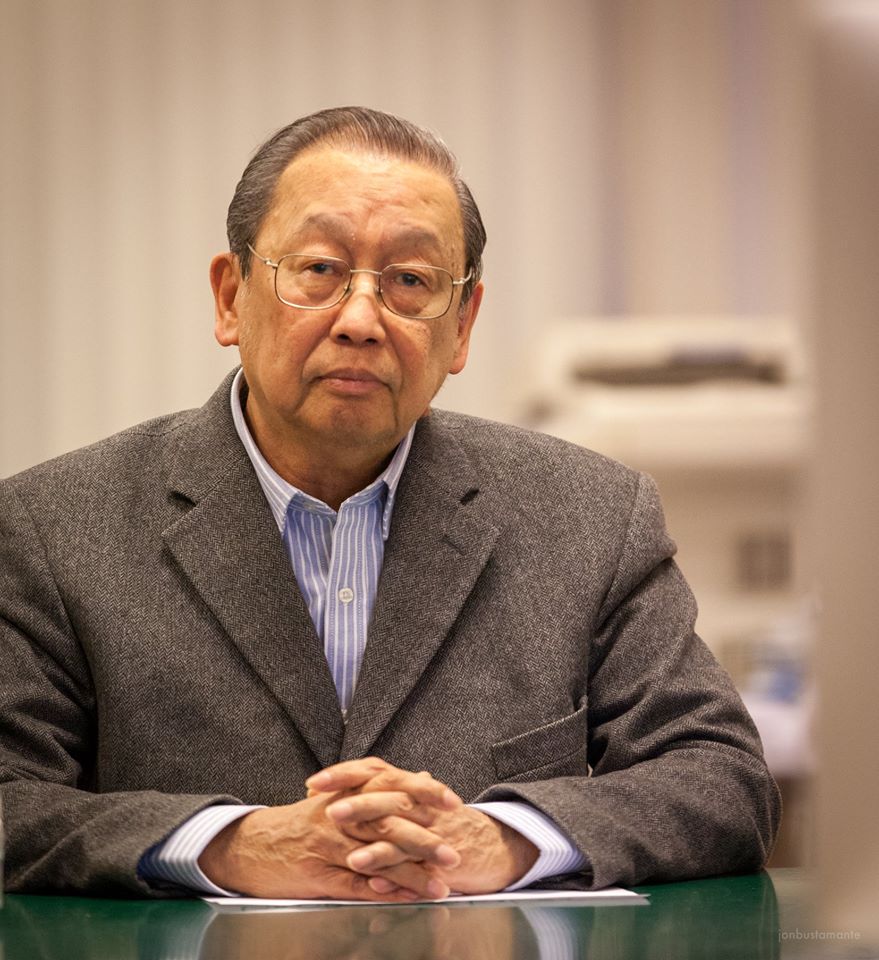
JMS: Imperialism is monopoly capitalism. It is the highest and final stage of capitalism. It dominates the economy in the industrial capitalist countries. It involves the merger of industrial and bank capital to form the financial oligarchy that is very parasitic. It exports not only surplus goods but more importantly surplus capital in the form of direct investments and loans.
It uses combines of monopoly corporations as cartels and syndicates within particular imperialist countries and within one bloc of imperialist countries against another bloc. It is the motive force of the imperialist countries in their competition to obtain sources of cheap raw materials, markets of surplus goods, fields of investments and spheres of influence. Such a competition involves a struggle for a redivision of the world, leading to wars of varying scales.
US imperialism engaged Spanish colonialism in a war starting in 1898 in order to grab the colonies of the latter in Puerto Rico, Cuba and the Philippines. Then in its Treaty of Paris with Spain on December 10, the US bought the Philippines from Spain and proceeded to wage a war of aggression against the Filipino people who had earlier declared national independence on June 12, 1998, liberated the whole country except the walled inner city of Manila (Intramuros) and basically defeated Spanish colonialism.
US imperialism became a problem to the Philippines and the Filipino people because it violated their national sovereignty by waging a war of aggression that killed at least 1.5 million Filipinos, suppressed all patriotic and popular forms of resistance and turned the Philippines into a colony for exploitation. The US took superprofits from the Philippines as a source of cheap raw materials, as market for surplus goods, as field of investment and as a base for US participation in the partitioning of China for exploitation by several imperialist powers.
The US ruled the Philippines as a colony from 1902 onwards. It trained Filipino politicians to become US puppets and also allowed them to serve the local exploiting classes of big compradors and landlords. During its direct colonial rule, the US developed a semifeudal economy in which the biggest Filipino landlords owning haciendas for producing crops for export became big compradors by becoming the chief trading and financial agents of the US monopoly firms. Most prominent examples of such big comprador-landlords were the Roxas, Ayala, Zobel and Soriano families of Spanish ancestry. Eduardo Cojuangco is a more recent prominent example of the big comprador-landlords.
2. What are the ways that it was able to take a firm hold of the material base or the economy of the Philippine society?
JMS: First, US imperialism succeeded with its war of aggression by using superior military might and taking advantage of the incompetent leadership and the lack of correct strategy and tactics of the Aguinaldo government. At the same time, the US complemented its superiority in military weaponry with the deceptive policy of “benevolent assimilation” and the false promise of self-rule in order to generate capitulationism within the Aguinaldo government and among the landlords who occupied key positions or had great influence in the localities.
US imperialism cleverly induced the landlords to withdraw support from the revolution and to convert them into puppet leaders at various levels of the bureaucracy and society. The landlord class became the political and economic base of US imperialism in imposing itself on the entire Filipino nation and making the Philippines a US colony for decades until the Japanese fascists came to occupy the Philippines during World War II.
During its direct colonial rule, the US steered the feudal economy towards promoting the role and operations of the big comprador-landlord class in a semifeudal economy by expanding the production of agricultural, timber and mineral products for export in exchange for imported manufactures. The expanded financing and trading operations stimulated the growth of the comprador big bourgeoisie as a distinct class.
3. Please give some examples of unequal treaties that ensured US control of the Philippines after its so-called independence in 1946. Are these treaties still relevant today?
JMS: On the very day that the US pretended to grant independence to the Philippines on July 4, 1946, it required the Philippine government to sign the US-RP Treaty of General Relations, which provided for US control of Philippine foreign policy, continuance of the US military bases in the Philippines and the perpetuation of the property rights of US corporations and citizens.
Under the Bell Trade Act of 1946, the US continued to control foreign trade of the Philippines. The Philippine Constitution was also amended in 1946 in order to allow US corporations and citizens to have rights equal to those of the Filipinos in owning operating businesses in the Philippines. That was the infamous Parity Amendment. The Quirino-Foster Agreement was signed in 1949 to ensure that the US retained control and influence in the Philippine bureaucracy.
The US-RP Military Bases Agreement was signed in 1947 to further ensure the continuance of the military bases for 99 years. The US-RP Military Assistance Agreement was also signed in 1947 to ensure that US control of reactionary armed forces of the Philippines by making them dependent on US military indoctrination, planning, training, intelligence, military supplies and so on. The US-RP Mutual Defense Treaty was signed in 1951 to further bind the Philippines as a puppet state of the US. Further the Philippines became a key member the Southeast Asia Treaty Organization (SEATO), a regional military alliance which the US controlled and used for wars of aggression in Southeast Asia.
The aforesaid treaties are still relevant today because they laid the foundation and built the structure and mechanisms of US economic and military hegemony over the Philippines even as new treaties and agreements have taken the place of earlier treaties and agreements.
The Laurel-Langley Agreement of 1955 amended the Bell Trade Act and expired in 1974. But the US continues to control the Philippine economy with the dominant position of US monopoly banks and firms in direct investments and under the US-controlled agencies like the IMF, World Bank and WTO.
The SEATO was dissolved in 1977 and the US-RP Military Bases Agreement expired in 1991. But a series of agreements have served to perpetuate US military control of the Philippines, including continued direct military presence and use of military facilities within the national territory. I refer to the Mutual Logistical Support Agreement, the Visiting Forces Agreement of 1998 and the Enhanced Development Cooperation Agreement of 2014.
4. Does the US still have a monopoly control of the Philippines? How about other countries, for example China?
JMS: The US monopoly capitalism is still dominant in the Philippines if you take into account all US interests in the form of direct investments, loans and foreign trade on a bilateral basis as well as US control of Philippine economic policy and patterns of investments directly and through the multilateral agencies like IMF, World Bank and WTO. Aside from being No. 1 imperialist power in control of the Philippine economy, US imperialism has military dominance over the Philippines and the armed apparatuses of the reactionary state. China is merely an upstart in this regard, although it has made a dramatic aggression in the West Philippine Sea by building and militarizing artificial islands.
Japan has served as the secondary partner of the US in dominating the Philippine economy. It remains the biggest “official development assistance” lender but it is still second to the US in terms of investment. China has become the Philippines’ top trading partner, serving as destination of Philippine mineral and semi-manufacture exports, especially after it became the giant manufacturing platform of the US-dominated global value chains in the wake of the Asian financial crisis of 1997. Chinese state loans in Duterte’s Build Build Build program are just 17% of the indicative amount of the flagship projects. Japan still accounts for the largest.
China has had the distinct advantage in having Filipino-Chinese big compradors in the Philippines collaborating with Chinese monopoly banks and firms. But they are more focused on trading and expanding their market share than on gaining control over the Philippine financial system, although China has also made key investments, such as in the national power grid and telecommunications. Certainly, China has benefited from serving as the main partner of the US in carrying out the neoliberal policy of imperialist globalization in the Philippines and on a global scale for several decades already
But the long-time partnership of the US and China is now breaking up. Let us see how the increasing contradictions between the two since 2018 will affect their respective standing and operations in the Philippine economy. Let us also consider how such contradictions and the overall worsening crisis of the world capitalist system would adversely affect the economic and trade relations among the US, China and the Philippines.
5. What is feudalism? What are the social conditions that exist in the Philippines that prove feudalism is present there? What are the forms of feudal and semifeudal exploitation that farmers suffer from?
JMS: Feudalism is a mode of production whereby a few landlords own under torrens title or effectively control (under tax declaration, homestead, logging and mining concessions and lease agreements with government corporations) vast tracts of land and the big number of peasants who do not own land have to work as tenants and have to pay rent to the landlords in kind or cash at exorbitant rates and other varying terms. Some landlords have also adopted some amount of mechanization in plantations for export crops and big livestock or aquaculture farms producing for domestic consumption and export and have hired farm workers at subhuman wages on a year-round basis and on a seasonal basis.
The feudal form of exploitation is mainly and basically the payment of rent to the landlords by the tenants. It co-exists with such semifeudal forms of exploitation as hiring farm workers at subhuman wage levels by hacienda owners and rich peasants and the traditional practice of usury by merchants, rich peasants and landlords and the rampant practice of underpricing the farmers’ produce and overpricing their inputs and consumption goods. The latter practice has been worsening due to import liberalization and pass-on consumption taxes. There are also relatively more recent forms of semifeudal exploitation such as lopsided contract-growing arrangements with trading companies and so-called “community-based forest management agreements” wherein the land is supposedly owned by small farmers or the entire community.
The landed assets of the landlords are of far lesser value now than the capital assets of the big compradors and big comprador-landlords based in the cities. The output value of Philippine agriculture is grossly understated due to customary landlord evasion of taxes and consumption by most peasants of what they retain after paying rent.
Even then, the landlords still constitute the most numerous and widespread exploiting class in the country. And the poor and middle peasants who often double as farm workers and nonfarm odd jobbers are still the most numerous exploited class in the Philippines. The Philippines is not yet an industrially developed country and the industrial proletariat is still far smaller than the peasantry.
In looking at the entire Philippine economy, it is no longer a feudal economy but a semifeudal one in which the comprador big bourgeoisie is the more dominant exploiting class than the landlord class although many of the big compradors are also landlords because they continue to acquire land, using it as guarantees or collateral for loans, as source of agricultural surplus for capital accumulation and as an instrument of speculation, especially in real estate development.
In terms of the value of their assets in finance, trade, services and some amount of import-dependent manufacturing, the big compradors are more wealthy and far more politically powerful on a national scale than the landlords who are mostly stuck in the localities, exploiting tenants and engaging in municipal-level merchant-usury operations. Unlike the more numerous landlords who depend mainly on land rent, the big compradors enjoy high liquidity for business and political operations at the national center of power because they own the big banks and trading companies.
But as a distinct class, the landlords continue to carry a high degree of national clout because they have organizations for lobbying purposes and they are still a decisive factor in the elections of local government executives and representatives of the Lower House. They get themselves elected, entrench themselves in power with the captive votes of tenants and farm workers and with a bodyguard force or private army to complement the police and military. Thus, quite a number of them are known as local tyrants and warlords. And they are a still major factor in deciding who is the president and who are the senators.
6. Is feudalism a necessary ground for imperialism?
JMS: In the classical development of capitalism in the industrial capitalist countries, the agricultural surplus provided by feudal lords and then by capitalist farms was a major factor of capital accumulation and industrial development. Ultimately, there was a political and economic clash between the rising manufacturing bourgeoisie and the feudal lords, resulting in the liberal democratic revolution and land reform, as in the French revolution. The full development of capitalism involves the liquidation of feudalism, even when a constitutional monarchy remains as a vestige of feudalism, as in England.
But there is a difference between the previous development of free competition to monopoly capitalism in imperialist countries on the one hand and the imperialist power dealing with feudalism in colonies, semicolonies and dependent countries on the other hand. In these dominated countries, the imperialist power is more interested in extracting superprofits from extractive operations and the backward or less developed economic conditions than developing them to become industrial capitalist countries themselves.
Imperialism is against the comprehensive industrial development of a colony, semicolony or even a dependent country with some amount of manufacturing. It is happier that the dominated country remains poor and ever willing to sell cheap raw materials from its natural resources, serve as the market for imported commodities and take direct investments and loans for natural-resource exploitation rather than for industrial development in the client-state. Thus, imperialism is happy with the persistence of feudal and semi-feudal conditions here.
But the commodity system, development of some amount of manufacturing and foreign trade have also unavoidably arisen and eroded feudalism and resulted in semifeudalism and the rise of the comprador big bourgeoisie as the class more dominant than the landlord class. In the Philippines, the US carried out some amount of land reform to respond to land hunger, wean away the peasant masses from the old democratic revolution (which was led by ilustrados from landlord, merchant and bureaucratic families) and break up feudal controls to allow peasants to become resettlers, hacienda workers and mining workers. At any rate, the erosion of feudalism in the Philippines has fallen far short of the complete dissolution of feudalism because of the absence of genuine land reform and national industrialization.
7. What is the meaning of bureaucrat capitalism? How are the big bureaucrats in the Philippines?
JMS: In the simplest way, one can say that bureaucrat capitalism is the use of high public office for self-enrichment. But it can be more amply defined as a form of capitalism in which the highest public officials use their government powers and control of government agencies and enterprises, public funds and natural resources in the public domain to serve their capital accumulation in collaboration with their families and cronies in the private sector as already accomplished big compradors or wannabe big compradors.
In the history and current circumstances of the Philippines, the accumulation of great wealth in land or capital has been enabled by family members occupying high government positions and using their bureaucratic power to the advantage of their families and cronies. They personally benefit from the grant of concessions to exploiters of natural resources in the public domain, alienation of public land, franchises for the operation of public utilities, contracts in infrastructure building and related speculation in real estate, purchase contracts of the government, loans from state banks and insurance systems, endless perks and privileges through multiple positions and directorships in fund-rich government corporations, and so on and so forth.
In the Philippines, the highest and most powerful bureaucrat capitalists, including the president and some of his cabinet members, are big compradors in public office because the semifeudal economic conditions and imperialist domination prevent them from becoming industrial capitalists. Contrary to the notion of the revisionists that Marcos used his political power to promote national industrialization, all the enterprises that he and his cronies grabbed or built were big comprador enterprises dependent on imported equipment, construction materials, components and consumer manufactures as well as agricultural production and mining for export.
8. Is it possible to eliminate graft and corruption under the current system in the Philippines?
JMS: It is impossible to eliminate graft and corruption under the current system of government in the Philippines. Many of the standard modus operandi of corrupt bureaucrats I have mentioned are brazenly facilitated, legalized, and institutionalized throughout the bureaucracy, through countless links with the foreign monopoly capitalists and the local exploiting classes and various pork barrel mechanisms, political dynasties, widespread nepotism, and bribery of all kinds to satisfy or silence subordinates or even intrasystemic critics and oppositionists.
It is in the very nature of the ruling system of big compradors, landlords and high bureaucrats to help each other out in exploiting the broad masses of the people. Defenders of the ruling system argue that high officials can be restrained from graft and corruption because of the freedom of the people to criticize the misconduct of officials, there are rival political parties that criticise each other and there is a check-and-balance system among the three branches of government.
But we know too well how the ruling clique arises from generally friendly and peaceful competition during elections where groups of the exploiting classes finance their respective groups or parties of their political agents who vie for elective state offices during the elections. Whichever political party or group wins, the elected officials and their campaign financiers conspire to favor themselves and satisfy their drive for more wealth through the abuse of power and exploitation of the working people.
The acts of graft and corruption involving the violation or circumvention of the law or even the legalization of what is illegal and immoral can be restrained to some extent and within a certain period by criticisms from the opposition party that has loyalty to the ruling system and expects to take its own turn at engaging in graft and corruption. But very often, the competing factions of government officials can compromise among themselves and take their shares of the bureaucratic loot at the expense of the people. Even the biggest plunderers already convicted and in prison know how to pay for their freedom and proceed to gain more power and wealth.
9. What does it mean when you state that bureaucrat capitalism is the basis of local fascism?
JMS: Bureaucrat capitalists are already in power. More than any other section of the capitalist class they are in the best position to take initiative in acquiring despotic powers in fascist dictatorship in order to protect the wealth that they have already accumulated and to increase it further through the exercise of said powers. The only restraint on a president from becoming a fascist dictator is the potentially effective resistance of the people, opposition within government, from the churches and other powerful institutions and nonapproval and probable disapproval from the imperialist master.
In the semicolonial history of the Philippines, presidents have stayed in power according to the constitutionally-set term of office. But Marcos, the chief bureaucrat capitalist, dared to become a fascist dictator from 1972 to 1986. Ultimately, he would be overthrown by a convergence of diverse political forces.
But before he was overthrown, US imperialism consistently supported him for a long time, at least up to 1983, and allowed the US-controlled reactionary armed forces to support his fascist dictatorship because he favored and assisted US economic and military interests. The US junked Marcos only after he made himself more of a liability than an asset to US interests when the broad masses of the people kept on rising up against him, especially in the years of 1983 to 1986.
Now, Duterte is imitating Marcos and is trying to become a fascist dictator. He is trying to retain US support for himself by promising to destroy the armed revolutionary movement of the people and make charter change to give US and other foreign companies unlimited rights of ownership of Philippine land, natural resources, public utilities and all other businesses. He has pushed his political minions in Congress to pass bills for amending and making the 1987 constitution anti-national and anti-democratic and for carrying out unlimited state terrorism that trashes the Bill of Rights.
Because he is physically, mentally and morally deranged, he has become overdependent on retired and active military officers, keeps on militarizing the government and threatens to yield power to the military if he cannot keep it. He has been pampering his favorite generals with the rewards of bureaucrat capitalism and with impunity for the bloody crimes that he orders them to commit. He is promoting bureaucrat capitalist ambitions among the generals and setting the stage for the possible rise of a fascist military bureaucrat capitalism similar to that of Suharto in Indonesia.
The example of Marcos succeeding in imposing a full-blown fascist dictatorship on the Filipino people shows that this can be done again in view of the persistence of imperialist domination and the exploiting classes, the impunity that has been enjoyed by the Marcos family and its cronies, the rapidly worsening crisis of the ruling system, the brazen campaigns of state terrorism, and warlordism of provincial and regional ruling dynasties collaborating with the Duterte dynasty. But their problem is that the revolutionary movement of the people has grown much stronger nationwide than during the time of Marcos fascist dictatorship.
10. What is the basis of a semi-feudal, semi-colonial society? How do the three basic problems combine to create this kind of society?
JMS: The Philippines is semicolonial because while it has nominal independence and the trappings of that, US imperialism continues to dominate the country politically, militarily, economically and culturally, and violate the national sovereignty and independence of the Filipino people. Now the Duterte regime has practically surrendered to another imperialist power China the sovereign rights of the Filipino people over the West Philippine Sea and is eager to make the Philippines a debt vassal of China.
The Philippines is semifeudal because the comprador big bourgeoisie is the chief ruling class and no longer a purely landlord class as in the 19th century. It acts as the principal economic, financial and trading agent of US imperialism, profits most from such role even as it is still involved in the ownership and operation of farms for export crops and supports the landlord class as its closest ally, especially in the provinces outside the major urban areas.
I think that we have already sufficiently discussed how each of imperialism, feudalism and bureaucrat capitalism look after their respective distinct interests and at the same time collaborate with each other to keep the kind of semicolonial state and semifeudal economy that they can use to oppress and exploit the toiling masses of workers and peasants and the middle social strata.
11. How can this kind of society stay in place for decades? Is it possible to change it?
JMS: The ruling system is already rotting. Its chronic crisis is rapidly worsening. That is why the current ruling clique is desperate and knows no solution to social problems but to escalate the oppression and exploitation of the people. It has terminated the peace negotiations with the NDFP because it wants to scapegoat the CPP and NPA for fully realizing his scheme of fascist dictatorship.
A ruling system becomes more oppressive and exploitative before it can be overthrown by the armed revolution. But it can stay for as long as the revolutionary forces of the Filipino people (the revolutionary party of the proletariat, the people’s army, the mass organizations and organs of political power) are not yet strong enough to overthrow the reactionary state and achieve the victory of the people’s democratic revolution.
Fortunately for the Filipino people, their revolutionary forces keep on growing in strength and advancing nationwide. They are strongest and most secure from enemy attacks in more than 110 guerrilla fronts. Conditions for them to achieve greater victories are favorable because of the worsening chronic crisis of the Philippine ruling system and the world capitalist system. The worsening crisis has been generated by neoliberal greed, state terrorism, fascism and wars of aggression. It inflicts more suffering on the people but it weakens the ruling system and drives the people to fight and win victory in the revolution.
The Covid-19 pandemic has exposed the worst forms of oppression and exploitation under the ruling systems in the Philippines and the world and has contributed significantly to aggravation of the crisis of the world capitalist system to a point that this crisis will be even worse than the Great Depression and will have far-reaching consequences, such as the intensified struggle between revolution and counterrevolution.
Ultimately, the crisis conditions will generate the resolute and militant forces and movements to carry forward the anti-imperialist and democratic revolutionary struggles of the people for socialism. The people’s revolutionary movement in the Philippines will certainly advance with greater strides towards the final resolution of the three basic problems of the Filipino people and the building of a truly independent, democratic, socially just, progressive, prosperous and peaceful Philippines.###
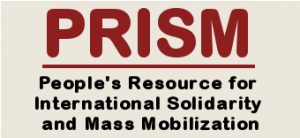
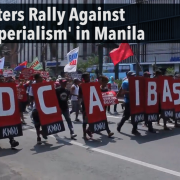
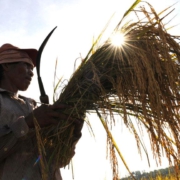
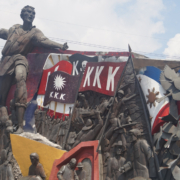
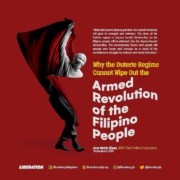
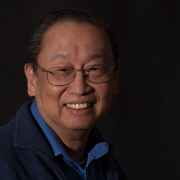


Leave a Reply
Want to join the discussion?Feel free to contribute!